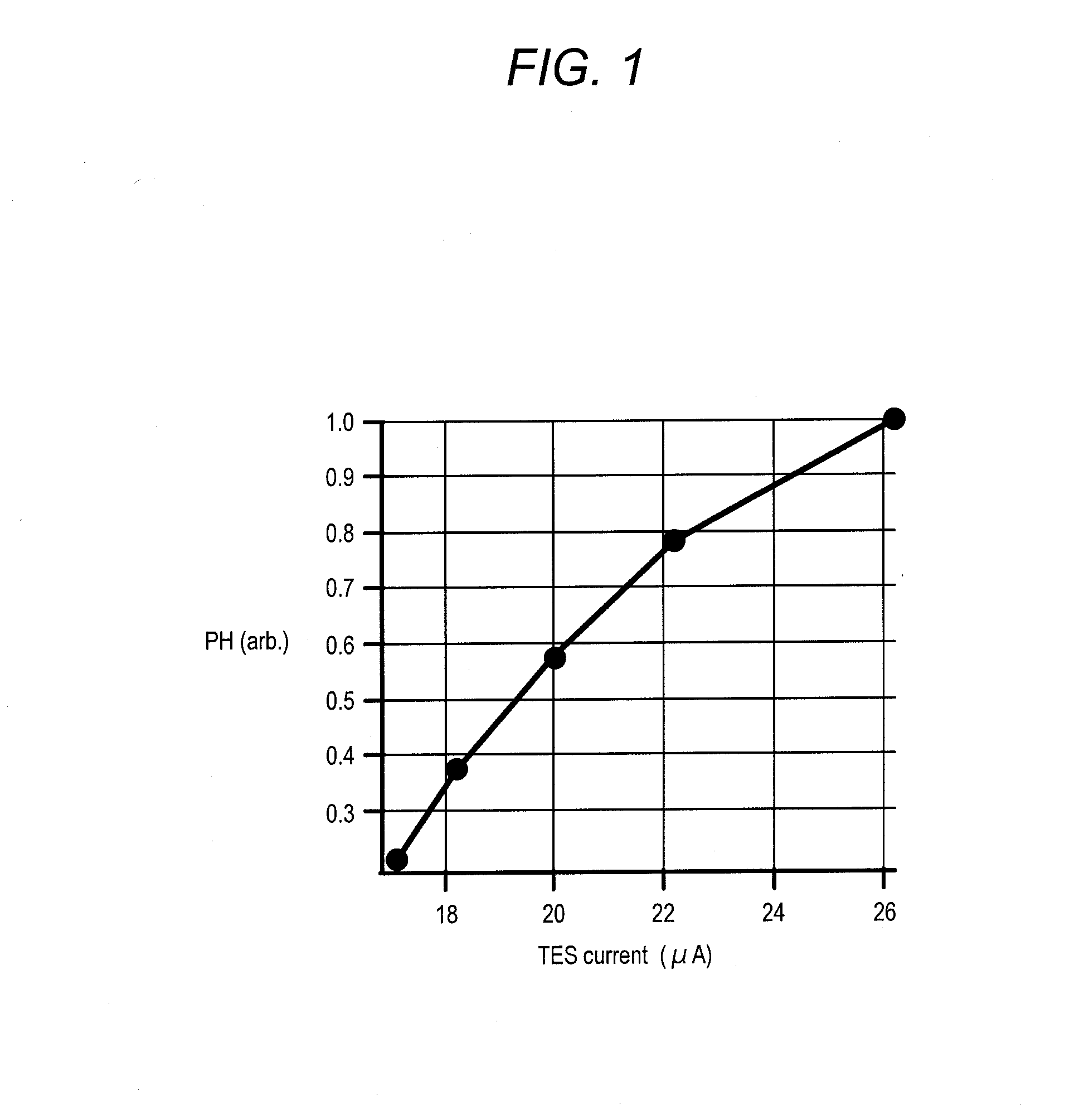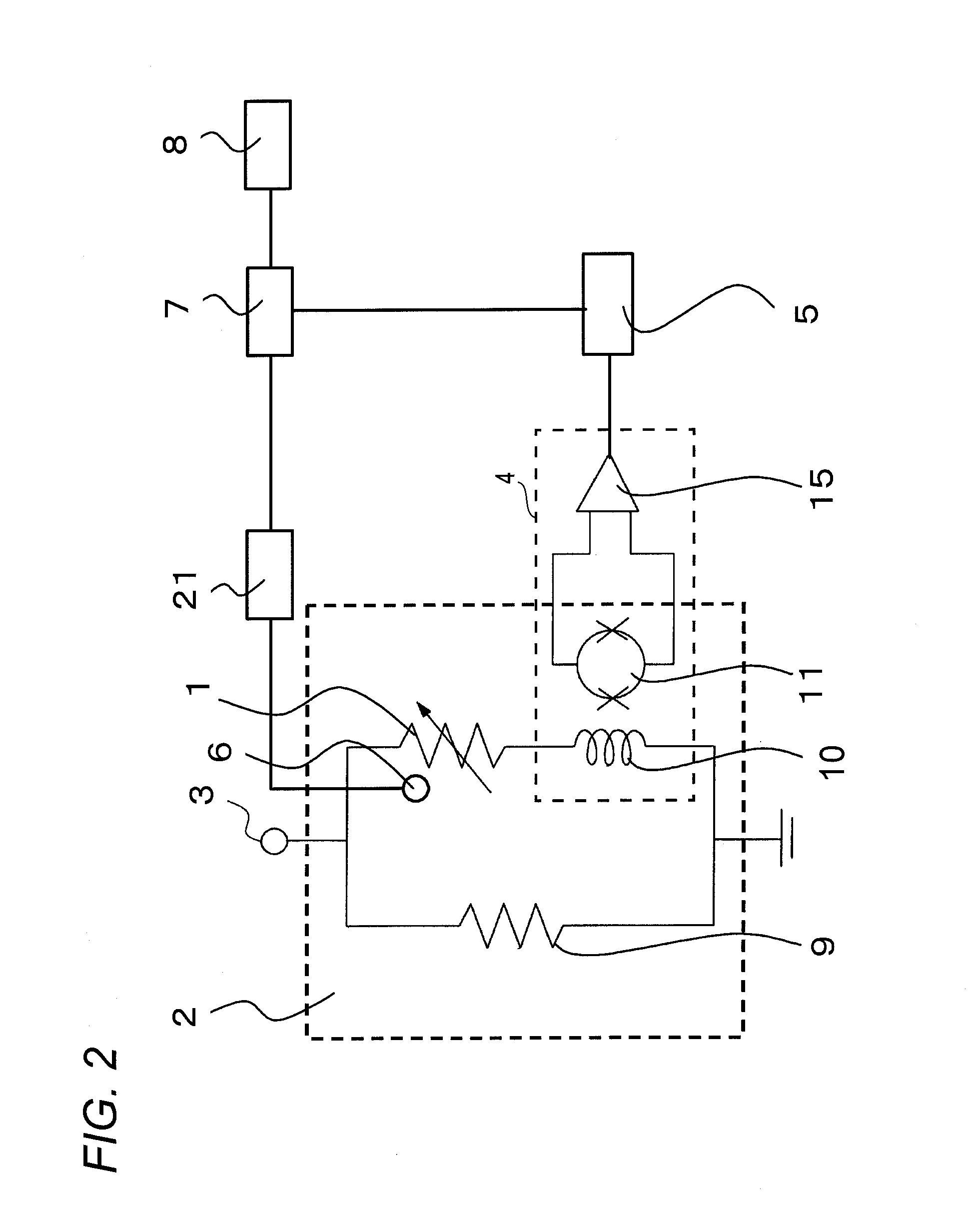Radiation analyzer and method for analyzing radiation
a radiation analyzer and radiation technology, applied in the direction of material analysis using wave/particle radiation, optical radiation measurement, instruments, etc., can solve the problems of difficult monitoring accurate baselines, difficult accurate determination of baselines, and inability to readily improve energy resolution to 130 ev or more, etc., to achieve high energy resolution
- Summary
- Abstract
- Description
- Claims
- Application Information
AI Technical Summary
Benefits of technology
Problems solved by technology
Method used
Image
Examples
Embodiment Construction
[0038]The following describes the operating principle of an embodiment of the present invention. In the operation of detecting radiation, a TES 1 utilizes a superconducting transition edge of a superconductor. The TES 1 holds an operating point in the superconducting transition edge between normal conductivity and superconductivity. Thus, in the case where the TES 1 absorbs radiation once and holds the operating point in the superconducting transition edge, the resistance change of several micro watts can be obtained with a temperature change of 100 mK, obtaining a radiation pulse in the order of micro angstrom.
[0039]The relation between a pulse peak value and radiation energy is obtained in advance. That makes it possible to detect the energy of radiation applied to the TES 1 based on the peak value of the signal pulse even if the energy of the radiation is unknown.
[0040]The operating point of the TES 1 is determined in accordance with a thermal balance between a current flowing in...
PUM
 Login to View More
Login to View More Abstract
Description
Claims
Application Information
 Login to View More
Login to View More - R&D
- Intellectual Property
- Life Sciences
- Materials
- Tech Scout
- Unparalleled Data Quality
- Higher Quality Content
- 60% Fewer Hallucinations
Browse by: Latest US Patents, China's latest patents, Technical Efficacy Thesaurus, Application Domain, Technology Topic, Popular Technical Reports.
© 2025 PatSnap. All rights reserved.Legal|Privacy policy|Modern Slavery Act Transparency Statement|Sitemap|About US| Contact US: help@patsnap.com



